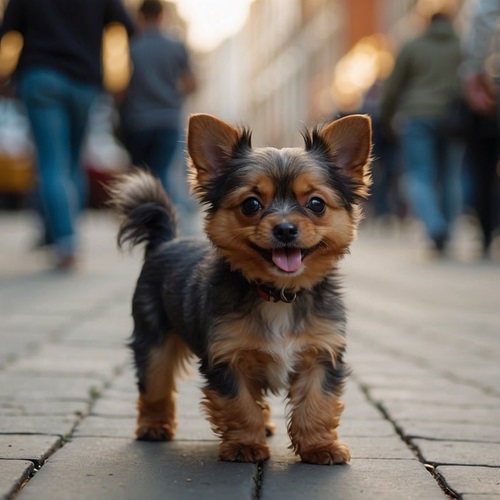How to safeguard your dog in summer
Summer is a wonderful time to spend outdoors with our dogs, but we have to be mindful of the temperature and help safeguard our pups from heat related issues. If they get too hot, they can suffer from heatstroke, a dangerous condition that happens when they stay in hot or humid places for too long. Heatstroke is a serious risk for them if they overheat, which can happen when they are exposed to high temperatures for long periods of time. This happens more frequently in the summer months or in areas known for hot climates.
What is heatstroke
Heatstroke is a potentially deadly condition that can happen when the body temperature rises too high after being in hot or humid weather, or working out too hard.
Dogs are more likely to get heatstroke if they are left in a hot car without the air conditioning running, left out in the sun without any shade, or over exerting themselves in hot and humid weather.
Dogs only have sweat glands on their paws and their main method of cooling down is by panting.
Heat stroke can affect any dog, but older, overweight dogs, those with heart or breathing problems, and those with thick or dark fur should also be extra careful, as they have a higher chance of getting heat stroke.
Certain dog breeds with short muzzles, like Pugs, Bulldogs, Boston Terriers, Boxers, and mixes of these breeds, aren’t able to pant effectively and struggle more to stay cool, making them more prone to heat stroke in hot or humid weather.
Signs and Symptoms of Heat Stroke
Panting heavily, whining, excessive drooling and not wanting to play are some important the first signs of heat stroke. Look for shade immediately, find some cool water for your dog to drink and try to get them into an air-conditioned environment.
You can also splash them with cool water and put them near a fan. Make sure that dogs with thick coats like Siberian Huskies, Pomeranians, Great Pyrenees, Afghan Hound and similar are soaked to the skin.
If your dog still pants and drools a lot, or they start to have trouble breathing, bloody stools, throwing up, weakness, confusion, seizures or fainting, then they need to go to the vet right away — these are serious signs of heatstroke, which can kill them.
Here are some tips to protect your dog against summer heat:
Limit activity to the cooler times of the day, such as early morning or evening hours, to avoid the hottest times of the day. The most direct sunlight occurs around noon, however 3-5 pm will generally be hottest part of the day.
Provide access to shade. Find an area that is not in the direct sunlight to avoid excessive heat. This may be as simple as putting up a sun umbrella in your yard.
Avoid strenuous exercise during the hottest parts of the day, very humid days, and during the early summer when pets may not yet be acclimated to the higher temperature.
Keep your dog hydrated with fresh, cool water. Carry a water bottle or portable water bowl.
Wet your dog with cool water and place them in front of a fan. Be sure that double-coated breeds are wet down to the skin. If you have access to a lake or pool let your dog go for dip. A kiddie pool is an affordable and safe way to let your dog cool off.
Be careful of hot asphalt and pavement. The blacktop can get much hotter than the air around it. The pads on dogs’ paw are stronger than our skin, but they can still get burned by walking on hot pavement. If you can’t touch or stand on the pavement for about 10 seconds, then it is probably too hot for your dog too.
Give your dog a trim. If you have a shaggy dog then a summer haircut may be the answer. The hair should be cut with scissors and not shaved. Do not cut around the whiskers but you can carefully trim around the eyes. Talk to your veterinarian or dog groomer to see if this would helpful for your breed of dog. If you have a short haired dog no need for a trim.
Make cold treats, like frozen dog-safe ice pops.
Have dog cooling supplies on hand in advance, such as battery-operated fan, cool cloths, cooling vest, cooling crate pad or a cold, or a wet towel that you can spread out for your dog to lie on.
Be sure to watch for signs of heatstroke, such as heavy panting, seeking shade, whining, reluctance to play, drooling, collapse or weakness, respiratory distress, seizures, or a sudden onset of vomiting or diarrhea. If your dog shows any of these symptoms, bring them into cool air conditioning with access to water immediately. If your dog continues to excessively pant and drool, or they begin to have difficulty breathing, bloody diarrhea, weakness, confusion, or collapse, then they should be taken to a veterinary hospital immediately.




